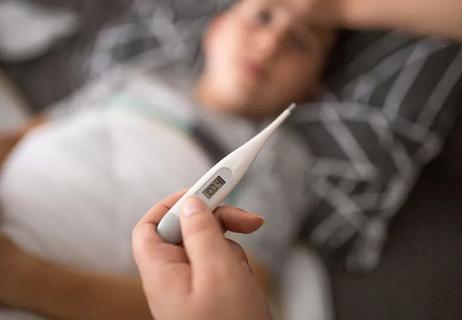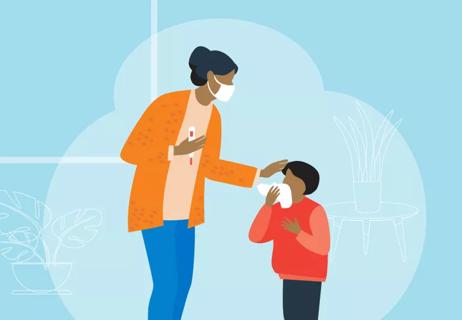The short answer from a primary care physician

A: Colloquially, we talk about a fever as feeling hot and sweaty. In medicine, we quantify that – a fever is a temperature of 100.5 degrees Fahrenheit or higher.
Advertisement
Cleveland Clinic is a non-profit academic medical center. Advertising on our site helps support our mission. We do not endorse non-Cleveland Clinic products or services. Policy
We put that specification on it because we see that there are different meanings for temperatures that may be above normal but not quite up there. What we call a low-grade fever may actually represent a different set of illnesses than something that gives the high fever.
Low-grade fevers you can get with any virus, as well as other things like an ear infection or strep throat.
High fever is characteristic of influenza. It’s actually part of the body’s immune response. We tend to think of a fever as something bad that we want to bring down – it’s very uncomfortable. But the funny thing is it’s our own body starting to fight off what’s invading us.
So, if a virus gets into our system, it’s in the mucus membranes and it starts to show up in the bloodstream, and our immune system releases inflammatory chemicals that increase the heat in the body and increase our core temperature. Part of what happens is that it makes it very uncomfortable for the virus to live. So we’re literally trying to cook the virus out of our bodies.
We do recommend that you take something like acetaminophen, which is Tylenol, or anti-inflammatory medications to bring down the temperature, because you can get dehydrated really easily when your body is warm. You’re sweating more, so you have to keep drinking a lot of water.
Advertisement
But most of the time we’re not trying to eradicate the fever, because it is part of our immune response. Instead we’re trying to get you more comfortable so that you’re not losing as much fluid and can sleep and rest and therefore get better faster.
How do you know when to go to the doctor? If your temperature is below 100.5 degrees Fahrenheit, you’re probably OK. Anything above that you should definitely get checked out.
But you want to make sure that you’re able to keep up on the fluids. If you’ve got a temperature that’s below 101 and you’re throwing up and can’t keep things down, that would be a good time to see the doctor as well.
—Family medicine physician Donald Ford, MD
Advertisement
Learn more about our editorial process.
Advertisement

It’s important not to give them fever-reducing medications right off the bat

Get some rest, drink fluids, use blankets or ice packs and take medications

Behavior and age are important clues

Use a digital oral, rectal, axillary, ear or forehead thermometer based on your child’s age

What you need to know about these common misconceptions

When undergoing cancer treatment, fever is a critical symptom to address

When symptoms call for a trip to the doctor

Start slowly with clear fluids, and then move to bland, easy-to-digest foods

Learn the benefits of a morning meal, plus five healthy food ideas to start your day right